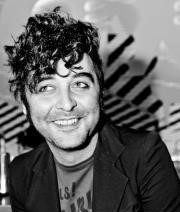“Like Zavattini’s arvers brushstrokes (“inverted”, in the dialect of Luzzara) and Tedesco’s sculptural cavities, the void therefore constitutes a conscious attempt to probe the unexpected, to interrogate thought on new perspectives of vision”. Thus concludes the illuminating critical text by Antongiulio Vergine which serves as a presentation for the show of Cesare Zavattini and Marcello Tedesco’s works at the KAPPA NöUN exhibition space in San Lazzaro di Savena (Bologna), a contemporary hangar location for the association born from the will of the collector Marco Ghigi. The title A vrés, also in the dialect of Luzzara, means I would like and recalls the homonymous collection of poems written in the dialect of Luzzara, his hometown, by Cesare Zavattini, published in 1986.
Thus, if we want to find fundamental parameters within which to frame the exhibition, we can identify them precisely in these two: on the one hand, the dialect as a cipher of the archaic, of the primordial, of the ancestral, of the original; on the other hand, the void as an opening on a possibility that rejects any scholastic plaster cast. It is under these symbolic insignia that the singular and very stimulating encounter between the paintings of an icon from the history of twentieth-century Italian culture took place, such as Cesare Zavattini (universally famous as a screenwriter, director, writer, poet, television personality, but certainly less as a painter) and some works by Marcello Tedesco, mostly sculptures. It is on the initiative of the latter, born in 1979 and promoter together with the artist Silla Guerrini of mtn | temporary navile museum in Bologna, that this exhibition took place. The project is proposed as a consequence and development of the Aspettando Za exhibition, curated by Marcello Tedesco in the first months of 2021 in his space in Bologna and focused on the deepening of Zavattini’s poetics through the museum re-proposal of his working habitat, or his studio, through partly unpublished works and relics from the Massimo Soprani collection, Zavattini’s secretary in Luzzara for thirty years.
In a seamless succession in the large and bright white hall of KAPPA NöUN we can therefore observe the canvases of the master of neorealist cinema and the sculptural constructs of Tedesco, made during the lockdown, when the artist transformed the set up of the exhibition Aspettando Za (closed to the public in compliance with ministerial decrees) in his creative laboratory, on which the spirit of the other hovered.
Zavattini’s canvases strike for the torment and anxiety that animates them and which could astonish those who associate him with the mostly ironic, jovial and mocking image often manifested in the multifaceted artistic biography of their author. Tedesco’s works, on the other hand, appear at first sight as a vestige of channels and tracks dating back to the mists of time, characterized by craftsmanship and detail, nowadays forgotten. To enhance the apparent inhomogeneity of the works of the two authors, one could note the fact that the former are pictorial self-portraits, albeit not immediately recognizable as such, while the latter are mostly terracotta artifacts, except for an engraved and blackened wooden palette that recalls the sinuous serpentine of the water distribution networks. However, on a more thoughtful observation it can be seen that precisely the ancestral and the void represent two lines of convergence between the paintings of the subject-writer of Ladri di Biciclette and the sculptures of the promoter of the exhibition.
In fact, in the canvases of the first there is a sort of dismay for the lost image which one wants to pursue with the brushstroke, with the sense of a run-up destined to fail but which takes to show itself in all his efforts. Likewise, in the works of Marcello Tedesco the image of a lost time is imposed, which is still relived, for example by collecting a liquid that reproduces itself indefinitely or almost thanks to the presence of a slowly decomposing block of sodium chloride. The void as that which surrounds every being seems so redeemed by both these authors who point out, however, its actual presence, in the absence of the represented objects. In the artistic gestures of both, there is no concession to nostalgia for a supposed fullness of the material, but rather prevails the impression that their meeting values the disappearance of things as an opportunity for new inventions to come. “A vrès”, or “I would like”, as it has always or almost always been said, even in the shadows of a very provincial, rough, peasant, marginal dialect, it resounds like a never tame prescription, but always to be claimed in the conditional: the stakes of the hard work of artistic research.
Info:
Cesare Zavattini e Marcello Tedesco. A vrés
20/11/2021 – 20/12/2021
curated by Antongiulio Vergine
Open every day, the exhibition can be visited by appointment only
Hoursi: 16.30 – 19.30
contacts: 3270439562; kappanoun@gmail.com
KAPPA NöUN
Via Imelde Lambertini 5, San Lazzaro di Savena (BO)
 A VRÉS, Cesare Zavattini and Marcello Tedesco, 2021, exhibition view, Kappa-Noün, San Lazzaro di Savena (BO)
A VRÉS, Cesare Zavattini and Marcello Tedesco, 2021, exhibition view, Kappa-Noün, San Lazzaro di Savena (BO)
 Cesare Zavattini, Personaggio con croce oro sul petto, 1968
Cesare Zavattini, Personaggio con croce oro sul petto, 1968
 Marcello Tedesco, Gruppo scultoreo, 2021
Marcello Tedesco, Gruppo scultoreo, 2021

Actor and performer, he loves visual arts in all their manifestations.






NO COMMENT